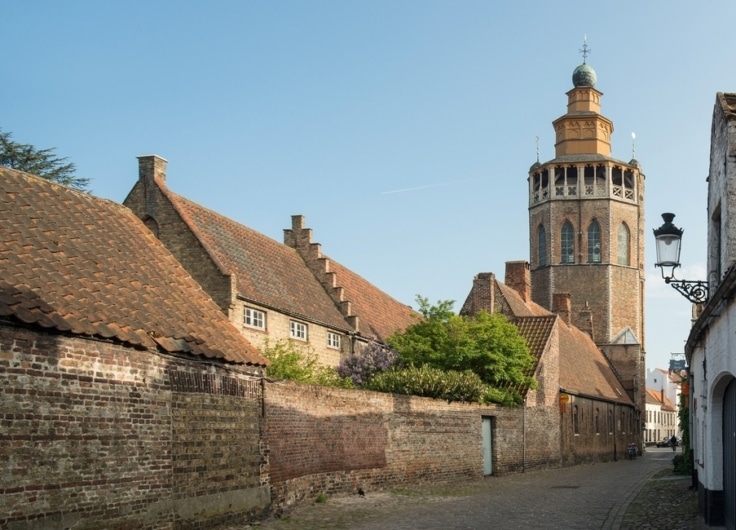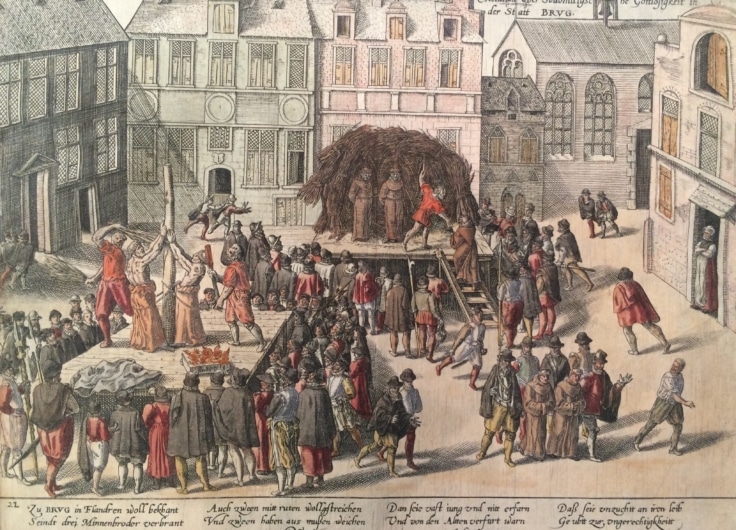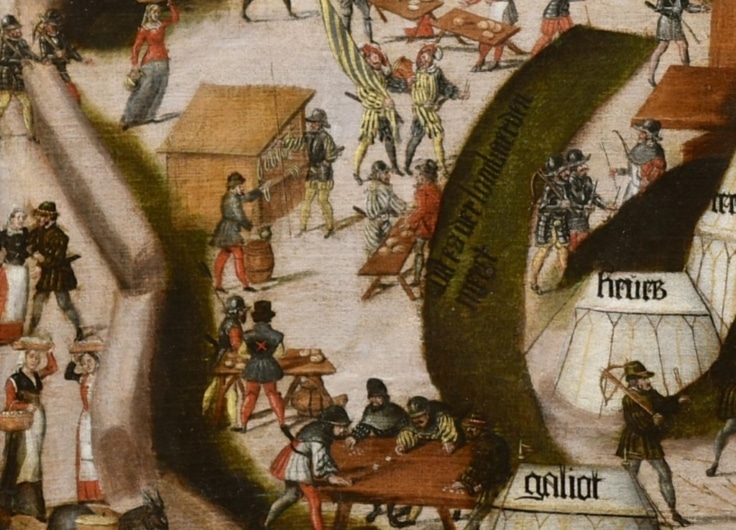Anselm Adornes Brought the Holy Land to Bruges
Imprisonment, dangerous pilgrimages, political intrigues and a brutal murder. The life of Anselm Adornes (1424-1483) reads like an exciting historical epic. As an influential businessman, knight and diplomat, the Bruges native was closely involved in the politics and trade of his time. Six hundred years after his birth, the Adornes Estate and the Jerusalem Chapel preserve the legacy of this adventurous and devout fifteenth-century nobleman and his family.
Anselm was the most renowned member of a prominent family from Bruges, originally rooted in Genoa. It is believed that in the first half of the fourteenth century, one of Anselm’s ancestors settled in Bruges, where the family quickly rose to prominence. Over several generations, the family acquired wealth and prestige, eventually ascending to the nobility.
A significant portion of the family’s income came from the trade of alum, a mineral used for making cloth light- and water-resistant and for fixing colour during dyeing. Additionally, various family members established connections with other notable Bruges families through marriage and held political positions.
Order of the Unicorn
Social prestige went hand in hand with a noble lifestyle. Anselm was an active member of the St. Sebastian archery guild, and like his father and uncle, he joined the Bruges tournament society of the White Bear. He frequently participated in the city government and was deeply involved in municipal finances and international trade.
Anselm not only played a role in the import of alum, but he also maintained contacts with Scottish traders. In 1468, he even led a successful diplomatic mission to Scotland after the Scottish parliament had suspended trade with Flanders. Anselm managed to reverse that decision, and as a result, Scottish King James III (1451/52–1488) knighted him in the Order of the Unicorn.
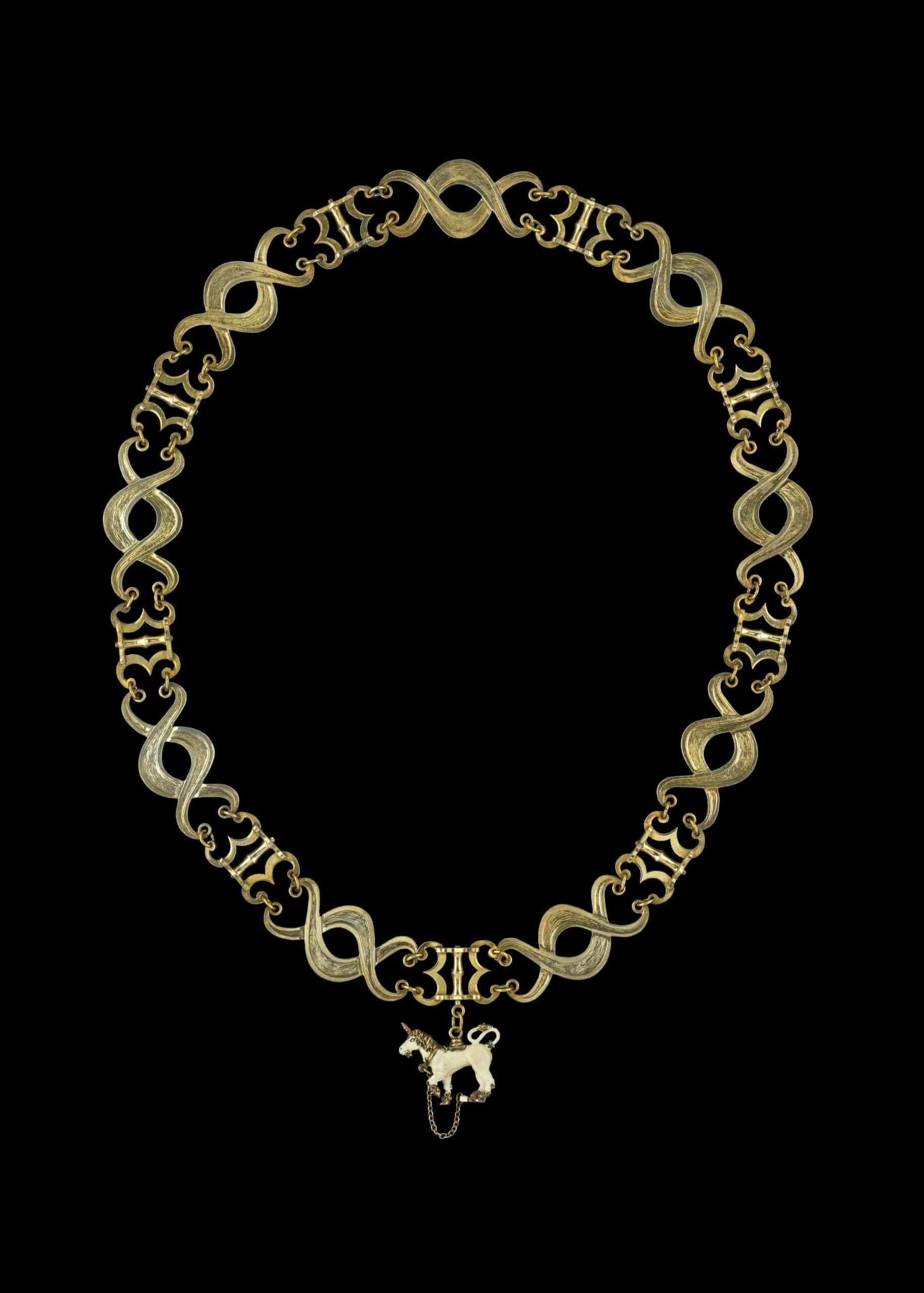 Chain of the Order of the Unicorn
Chain of the Order of the Unicorn© Studio Philippe de Formanoir
Until the end of his life, Anselm maintained a close, even friendly, relationship with James III. Previously, he had been close with Duke Charles the Bold (1433–1477), but his high social standing led to difficulties following the duke’s death in 1477. During the uprising that erupted in Bruges, he was arrested twice, tortured and accused of self-enrichment. Anselm had to pay a hefty fine, and after this challenging period, he shifted his focus to his connections with Scotland.
Reverence to Jerusalem
More than with a noble lifestyle, the Adornes family – and Anselm in particular – distinguished themselves with a profound interest in and devotion to Jerusalem (the city where the Passion of Christ took place) but also the Heavenly Jerusalem. This devotion even became a defining aspect of the family’s identity, so much so that it has been immortalised in the Jerusalem Chapel. The building and the atmosphere it radiates still feel authentic, even centuries later. The complex that houses this remarkable chapel remains privately owned by the descendants of the Adornes family.
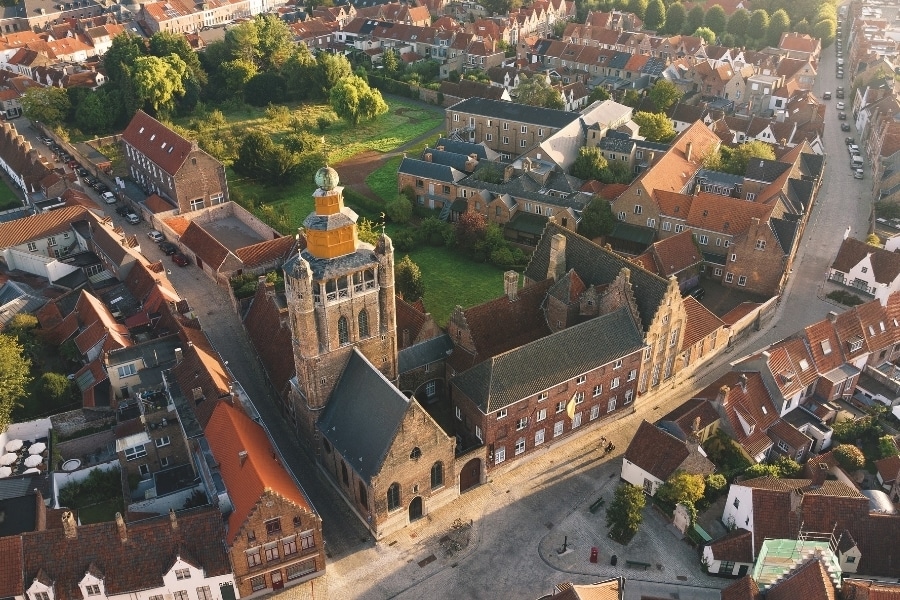 The Adornes Estate with the Jerusalem Chapel
The Adornes Estate with the Jerusalem Chapel© Flotar
Outside, the massive tower crowned with a sphere takes centre stage. The entire Gothic structure has a Middle Eastern feel, further emphasised by the small side towers adorned with a golden sun, star and moon. The chapel is inspired by the Church of the Holy Sepulchre in Jerusalem, with the interior also referencing the site of Christ’s Passion. The space is divided into the main chapel, from which two staircases lead to the high choir or upper chapel, beneath the octagonal tower. Behind the lower chapel lies a crypt (on the ground floor) providing access to a small space that can only be entered with a bowed head or on your knees. Inside, you’ll find an imitation of the Holy Sepulchre.
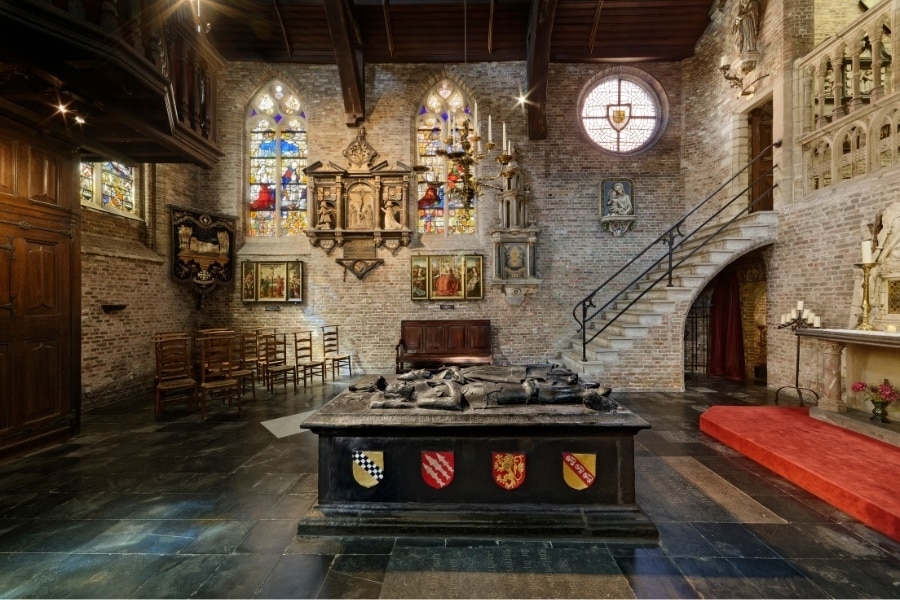 Interior of the Jerusalem Chapel
Interior of the Jerusalem Chapel© Studio Philippe de Formanoir
At the centre of the chapel stands the monumental Tournai stone tomb of Anselm Adornes and his wife, Margareta van der Banck (1427–1473). After his death, only his heart was laid to rest next to the body of his wife, with whom he had sixteen children. Anselm died in Scotland while leading a military expedition. During an attack on the monastery where he was staying, he was stabbed in the back, abruptly ending a tumultuous life.
Near Anselm and Margareta’s monumental tomb is a sculpted Calvary with three large crosses evoking the crucifixion of Christ. The plinth is carved with objects related to the Passion narrative, such as skulls, a lance, ladders, a hammer with nails and Christ’s robe. The adjacent crypt contains a tomb for Jerusalem pilgrims.
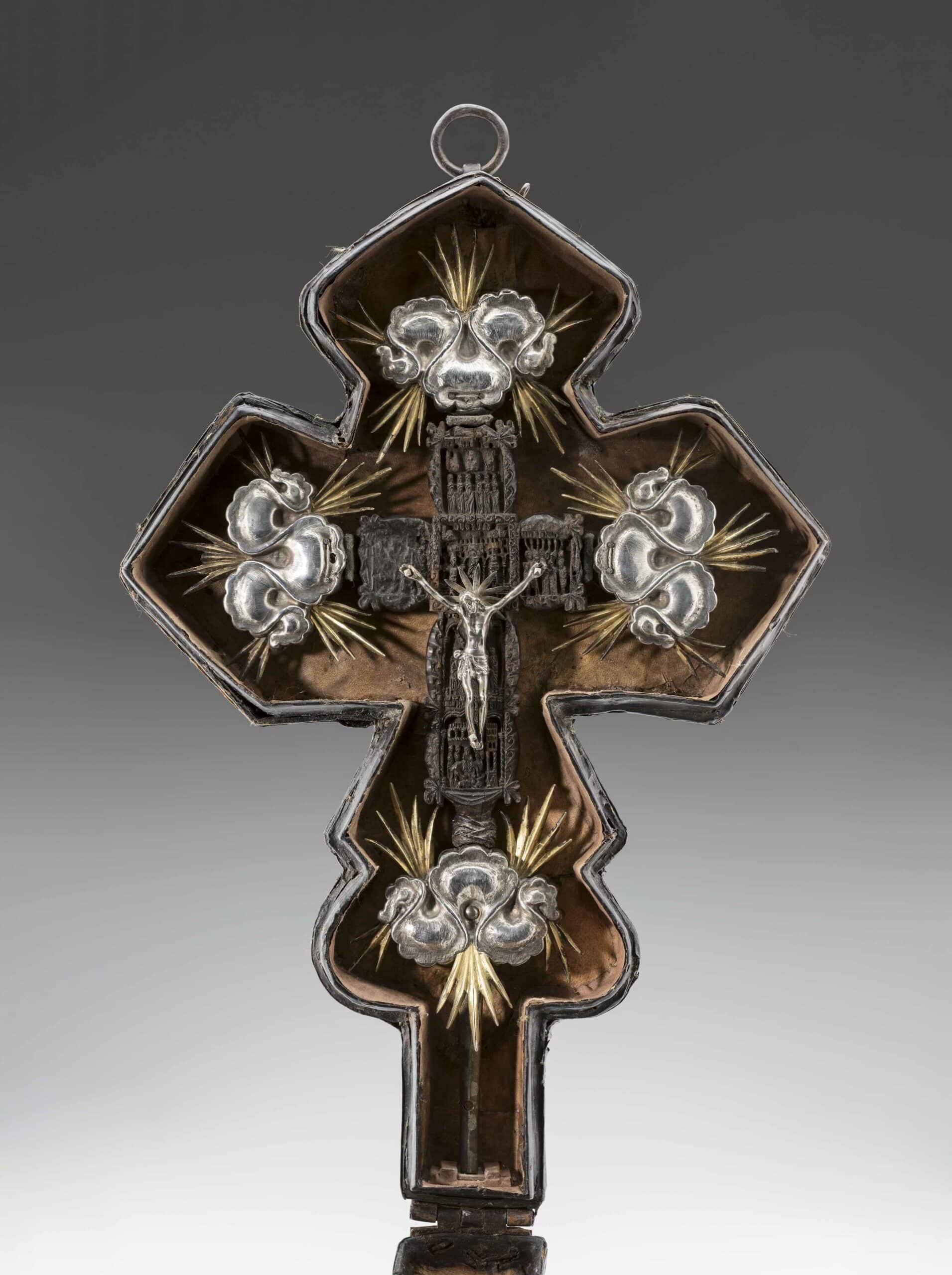 Late Byzantine cross, likely brought from the East by Anselm and Jan Adornes. The silver inlay with radiant clouds (the Adornes family crest) was added in the first half of the 16th century .
Late Byzantine cross, likely brought from the East by Anselm and Jan Adornes. The silver inlay with radiant clouds (the Adornes family crest) was added in the first half of the 16th century .© Adornes Estate
The Jerusalem Chapel is a piece of Jerusalem in Bruges. This can even be taken literally, as relics from the Holy Land were kept in the Calvary. The imitation and evocation of the Passion narrative in the chapel are accompanied by numerous references to the Adornes family. Family members are depicted in the stained-glass windows; their coats of arms are prominently displayed alongside symbols such as the Jerusalem Cross and the family crest with clouds and sunbeams.
Besides the monumental tomb for Anselm and Margareta, the chapel contains many other memorials for later generations of the family, giving the space the character of a family mausoleum. The chapel was initiated by Anselm’s father and uncle, but it was Anselm who completed the building, having laid the foundation as a child.
Road to heaven
Anselm expressed his devotion to Jerusalem not only through architecture, but also through a pilgrimage. On 19 February 1470, he set out with several other Flemings on a journey that would last more than a year. Upon his return, his son Jan wrote a travel account in Latin.
The group travelled via Genoa, Pavia – where Jan studied and joined the others – and Rome, where they had an audience with Pope Paul II. After visiting Tunis, Egypt, and Sinai with the Monastery of St. Catherine, they arrived in Palestine, where they visited the holy sites. In Jerusalem, they were even allowed to spend two nights and a day in the Church of the Holy Sepulchre. The return journey took them through Damascus, Beirut, Cyprus, Rhodes and Brindisi.
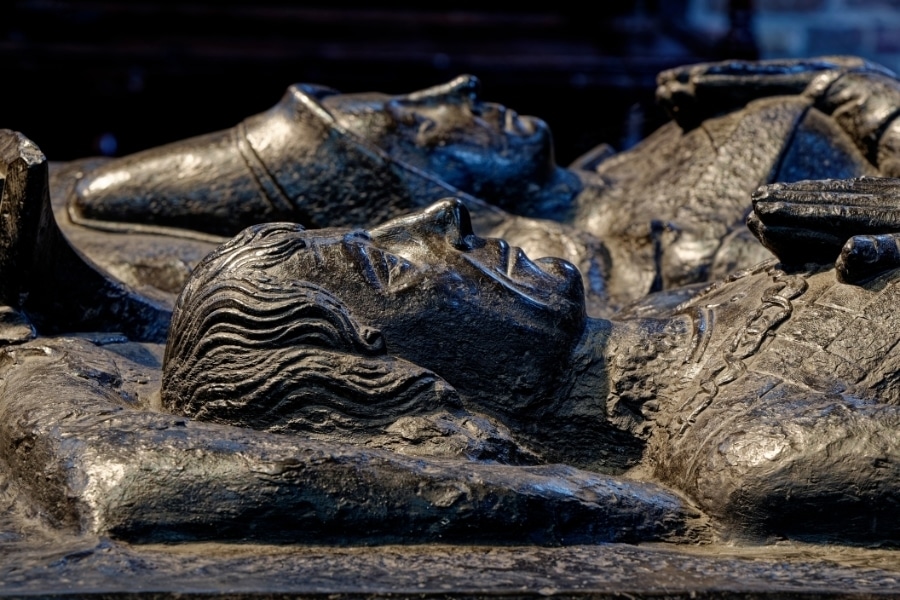 The monumental tomb of Anselm Adornes and his wife, Margareta van der Banck in the Jerusalem Chapel
The monumental tomb of Anselm Adornes and his wife, Margareta van der Banck in the Jerusalem Chapel© Studio Philippe de Formanoir
“There is only one road to heaven, and it is equally long from all corners of the world.” This sentence from the travel account characterises the travellers as devout, yet open to other countries and cultures, inspired by humanism. No country or people is considered superior to another: those who have traversed the world “believe that the course of the stars is roughly the same elsewhere as it is for themselves. Everywhere, people are governed by fate and the whims of fortune.”
In addition to great devotion, the journey also demonstrates a sense of adventure. Nonetheless, it was dangerous. A few days before his departure, Anselm drew up a will, revealing close ties with the Carthusian order, among others. According to that will, he left each of his two daughters who had entered religious life a painting by Jan van Eyck depicting Saint Francis.
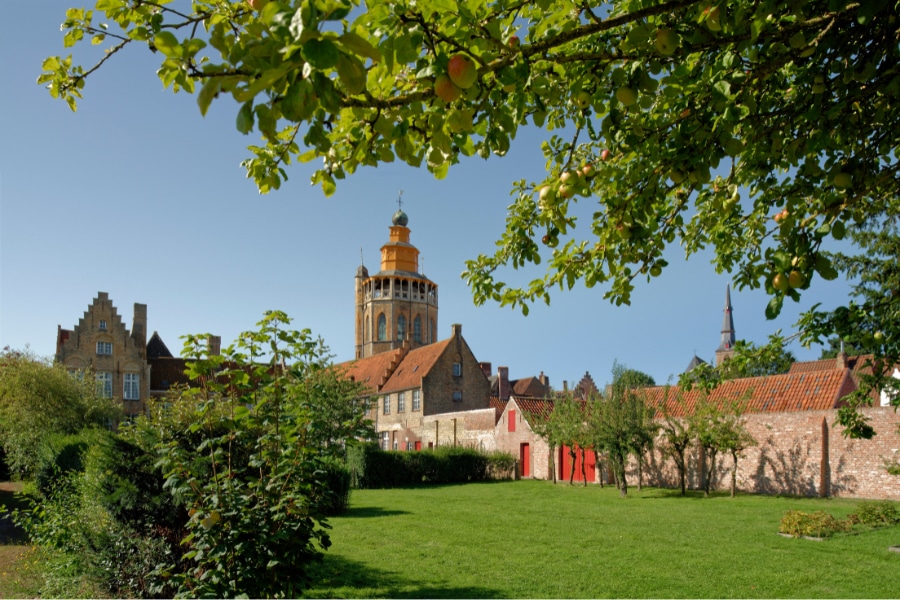 The garden overlooking Anselm’s city palace offers a tranquil spot in the city centre.
The garden overlooking Anselm’s city palace offers a tranquil spot in the city centre.© Studio Philippe de Formanoir
In 1473, Anselm set out again, this time accompanying the Franciscan Lodovico Severi da Bologna on a mission to the Shah of Persia to ally against the Turks. The journey took them through Poland, but Anselm did not get much farther than that country, as he soon returned to Bruges. His adventurous spirit was undeniable.
The Adornes Estate keeps the memory of this fascinating figure alive. The garden overlooking Anselm’s city palace offers a peaceful retreat, and exhibitions are organised at the estate. There are almshouses that Anselm once founded to provide shelter for twelve poor widows, but most noteworthy of all is the remarkable Jerusalem Chapel, which serves as a lasting testament to Anselm’s life and passions.
To mark the occasion of the six hundredth anniversary of Anselm Adornes, the book A Celestial Jerusalem in Bruges: The Adornes Estate and the Jerusalem Chapel, edited by Jan Dumolyn and Noël Geirnaert, was published by Hannibal. Until 4 January 2025, the exhibition
Anselm Adornes: Glory and Misfortunes of a 15th-Century Traveller is on display at the estate.


